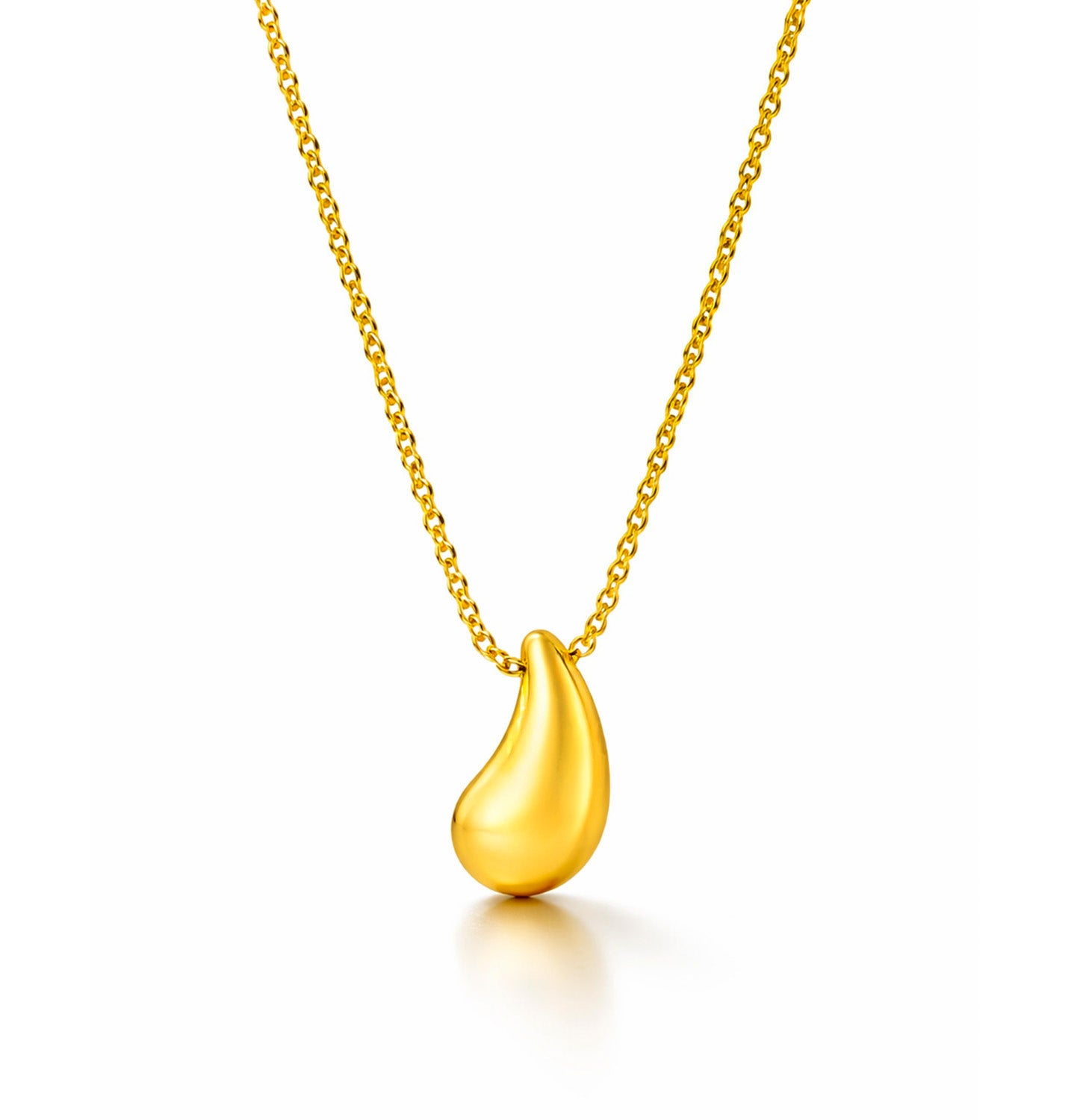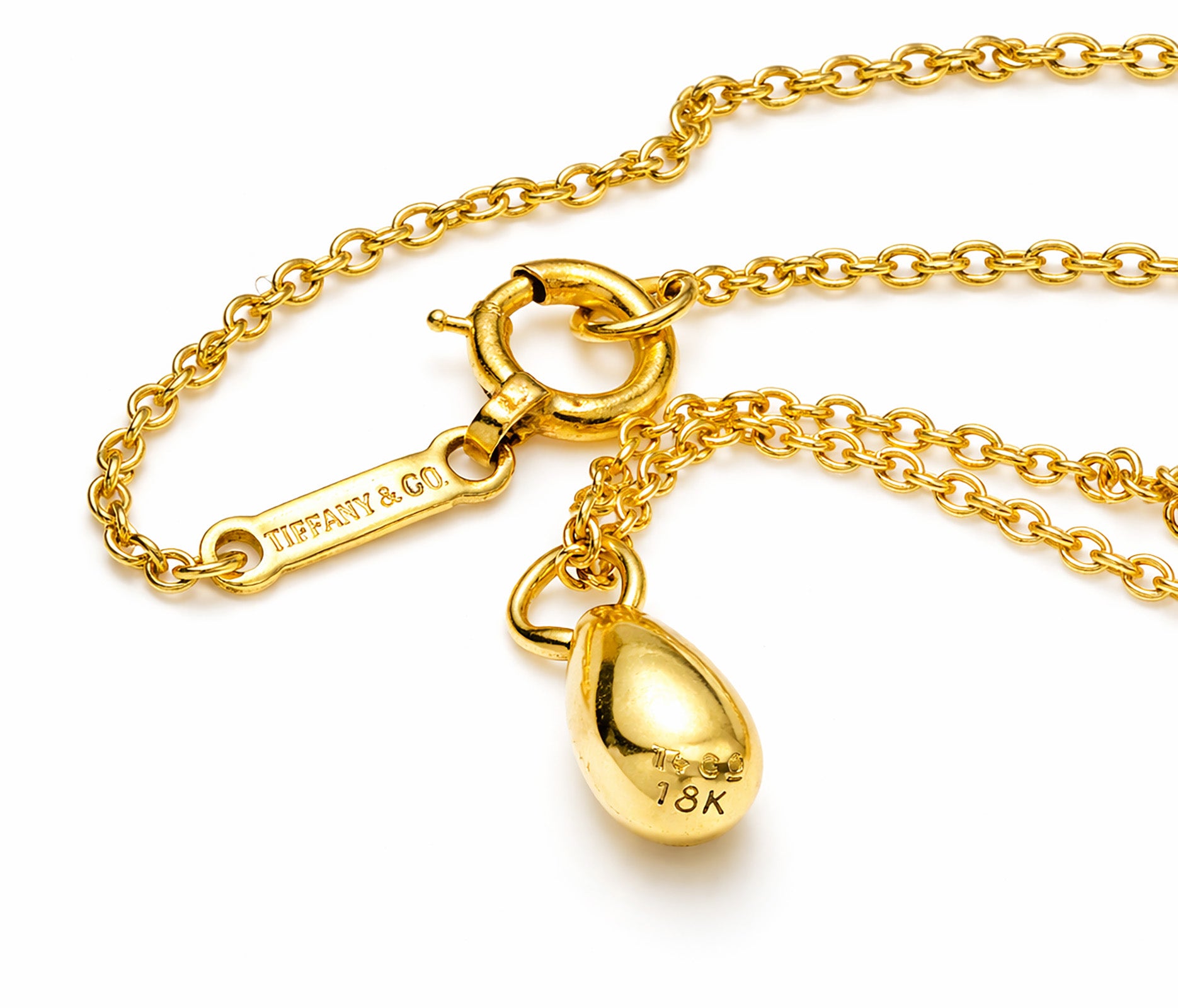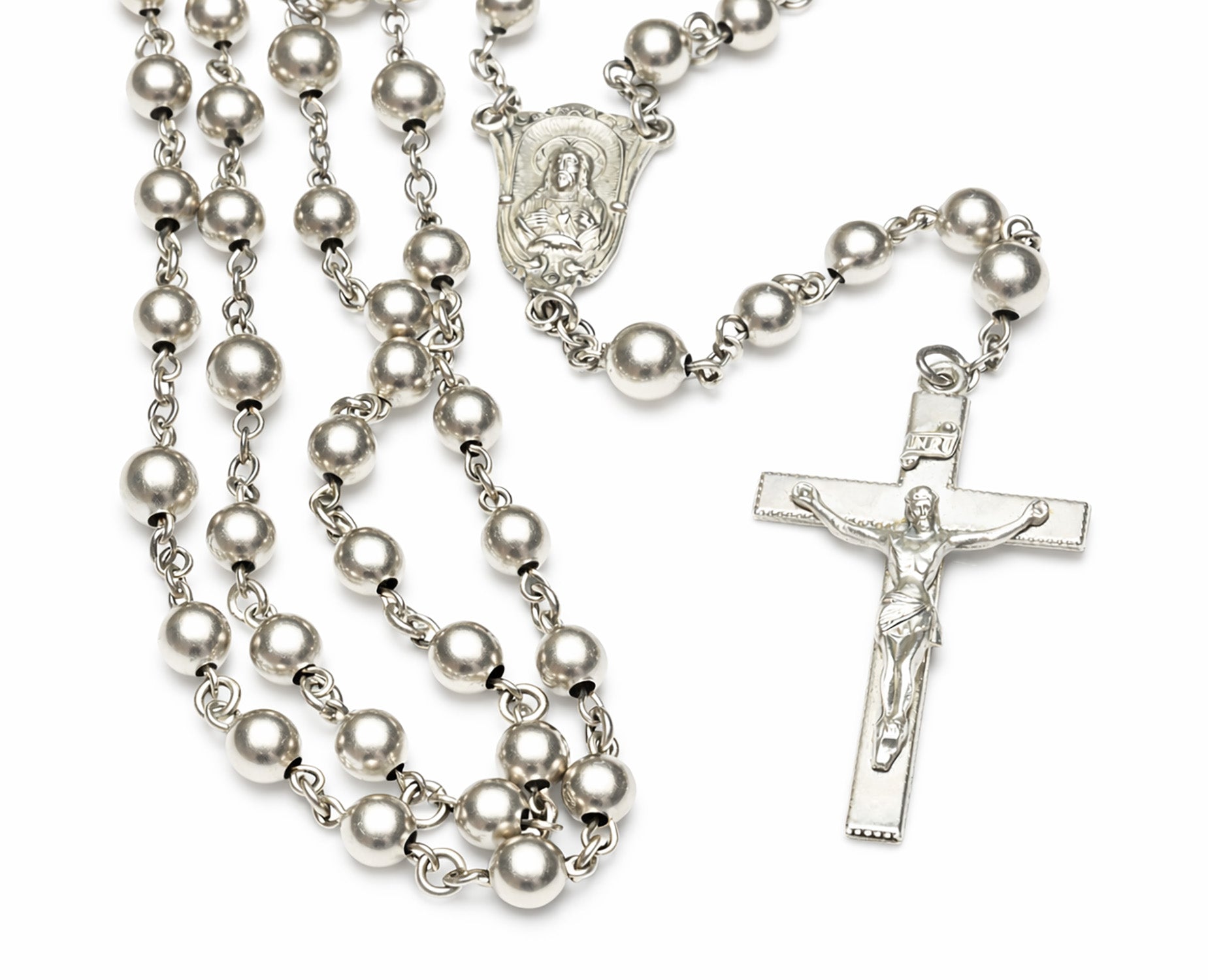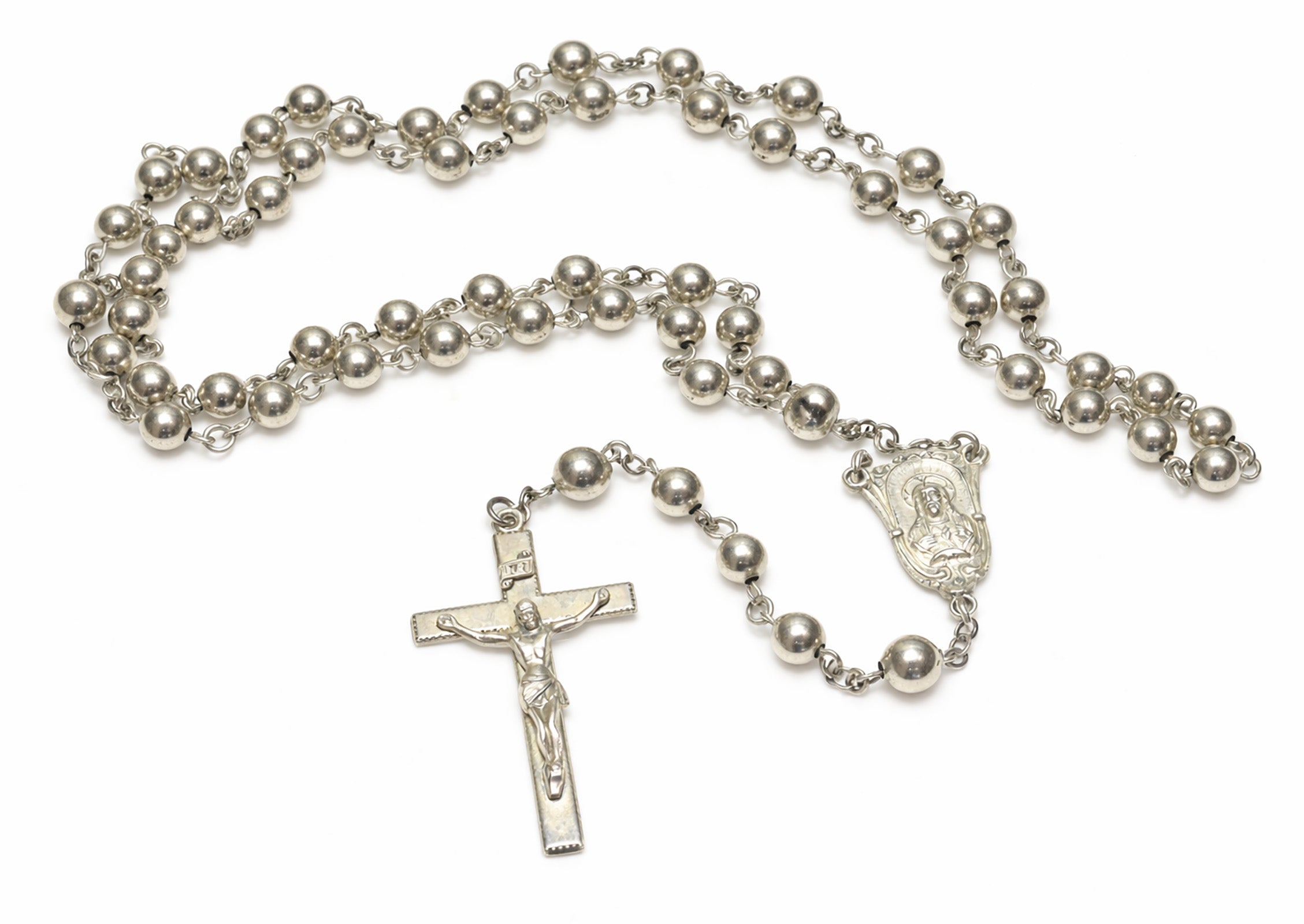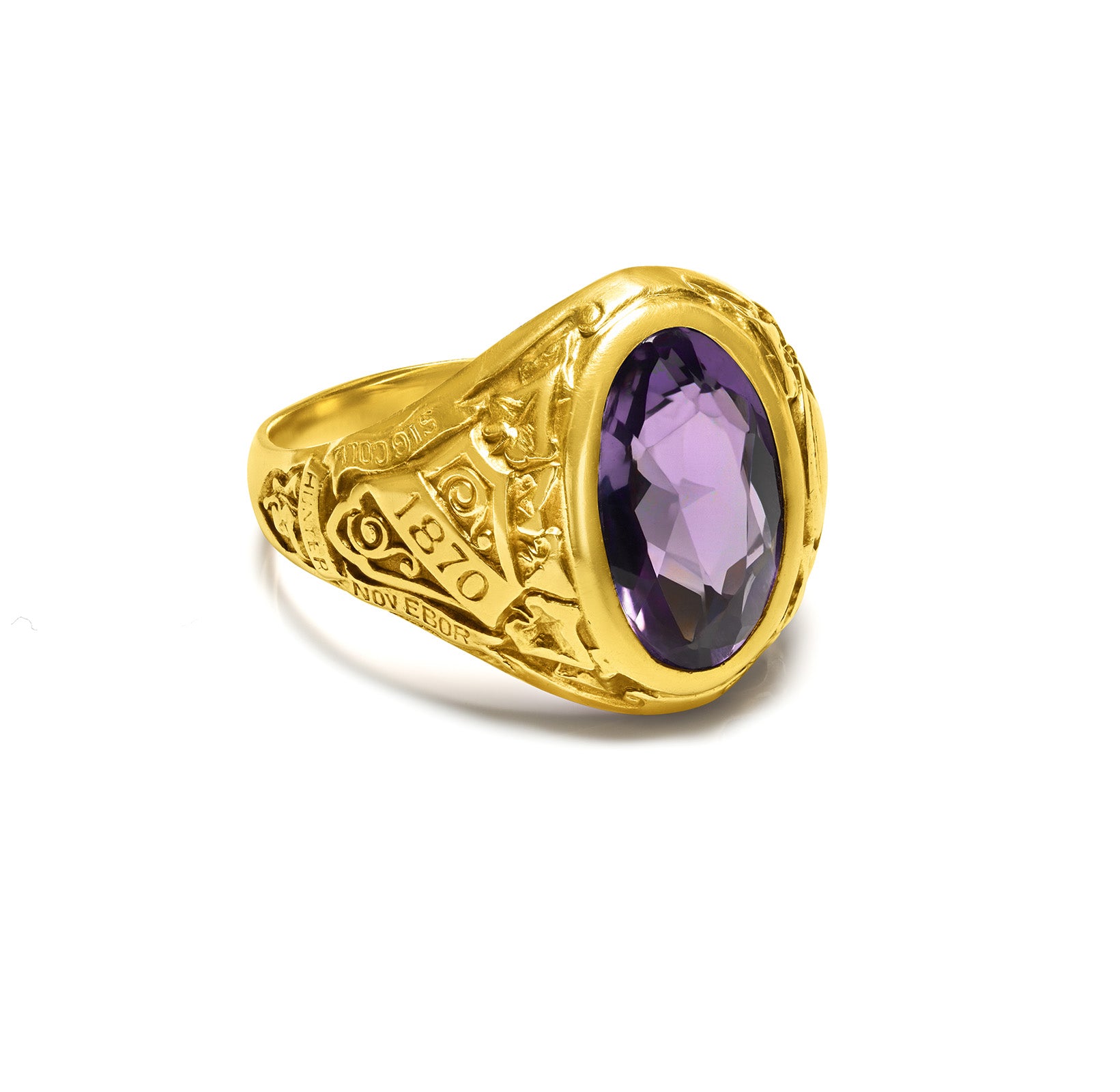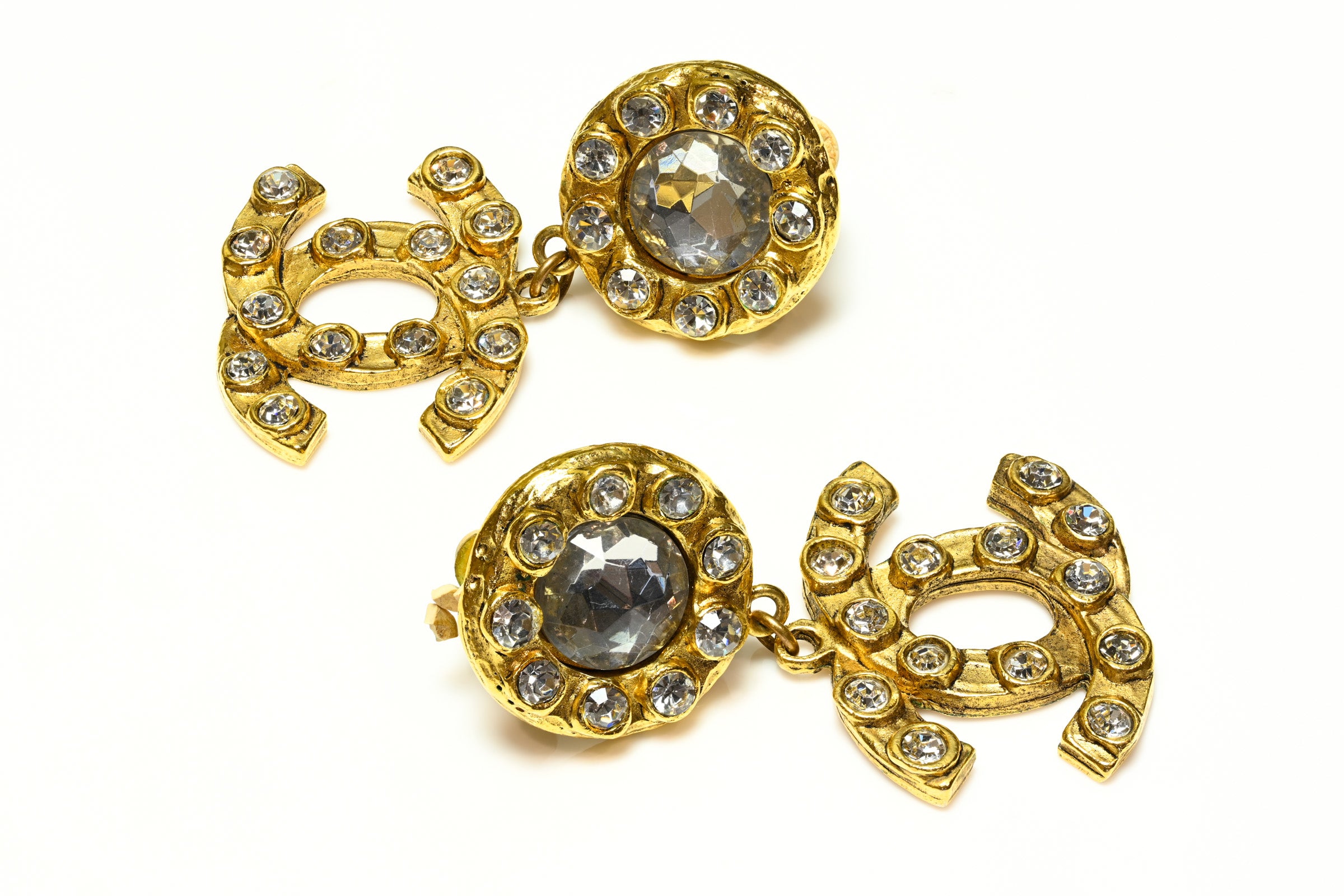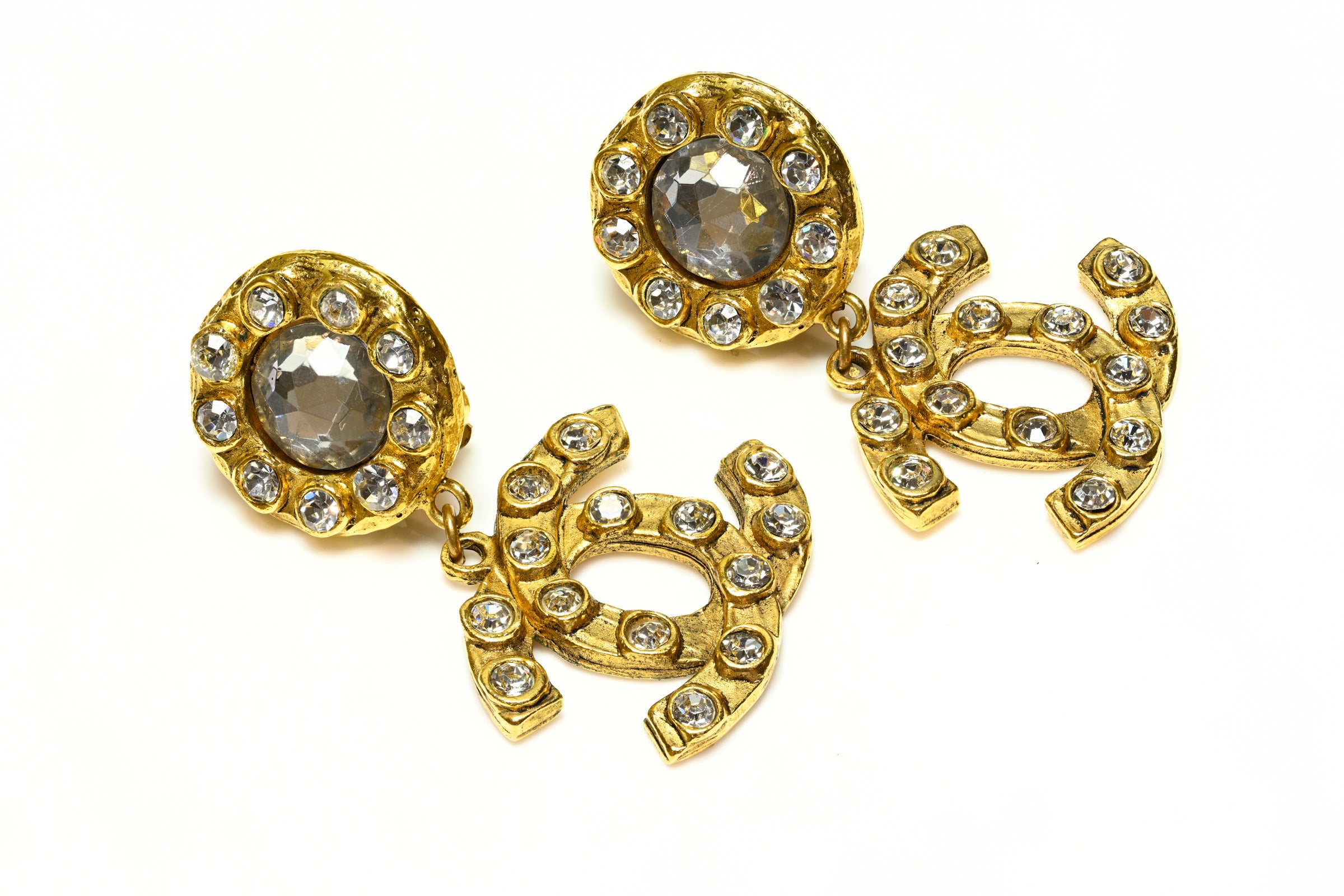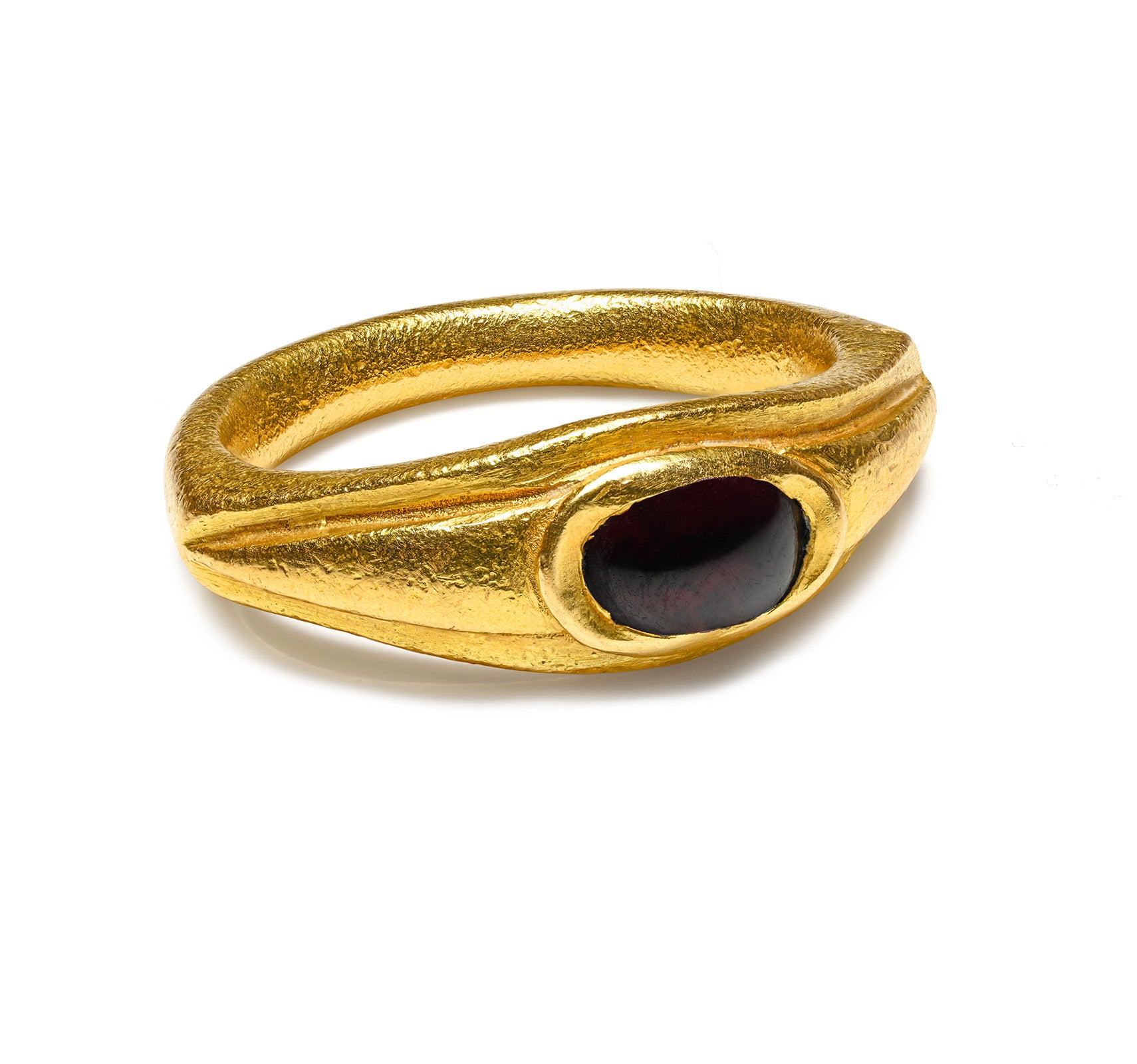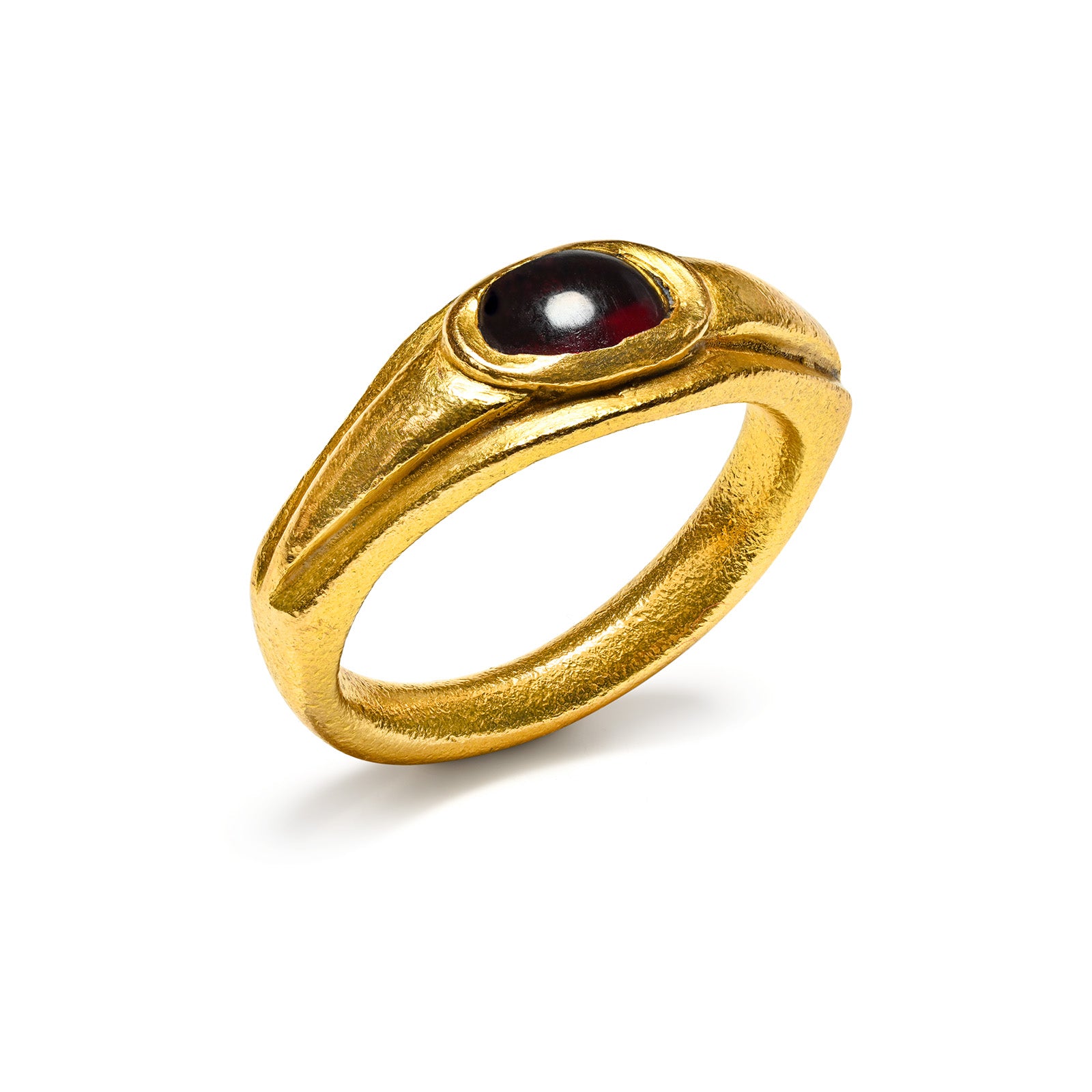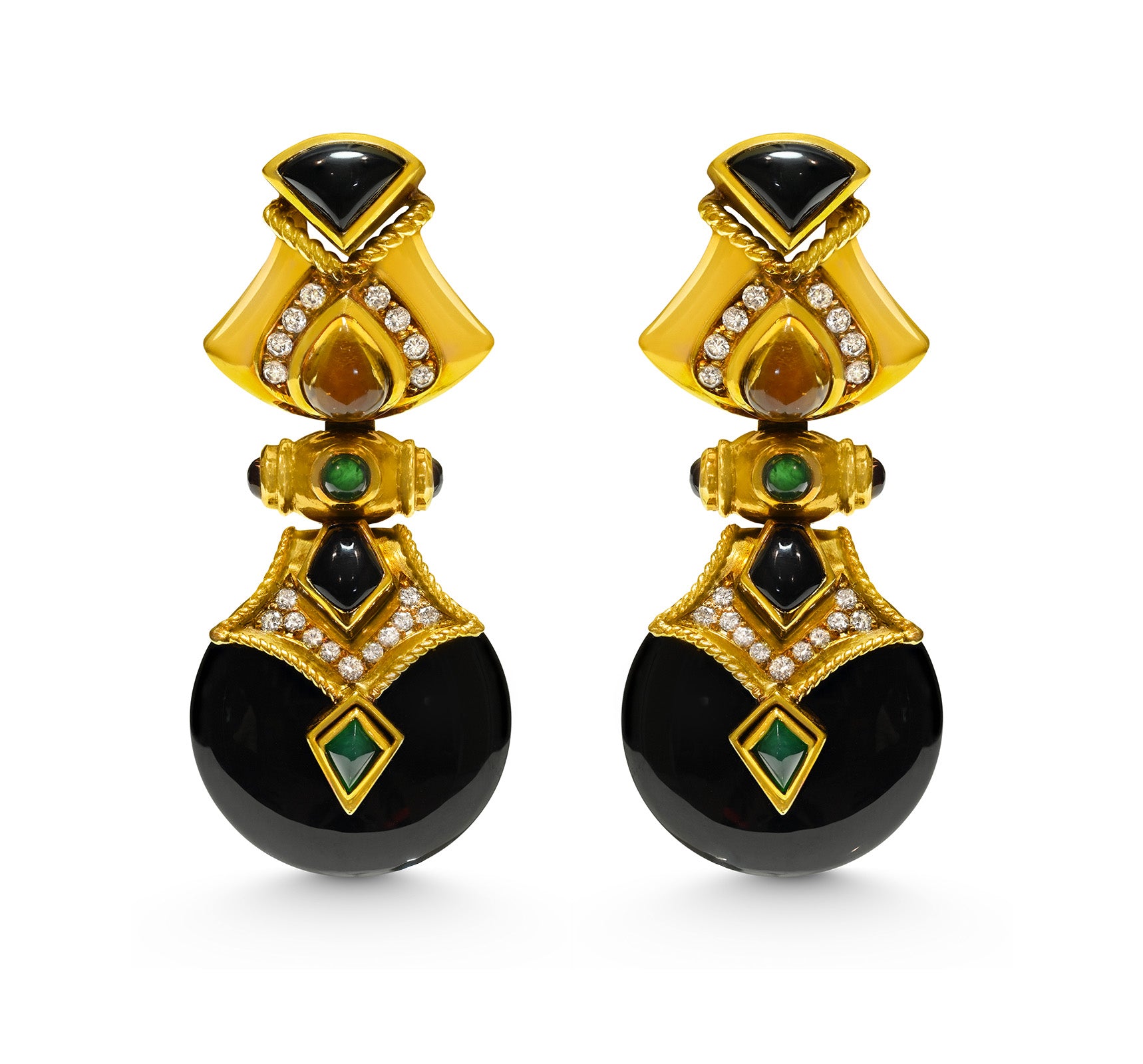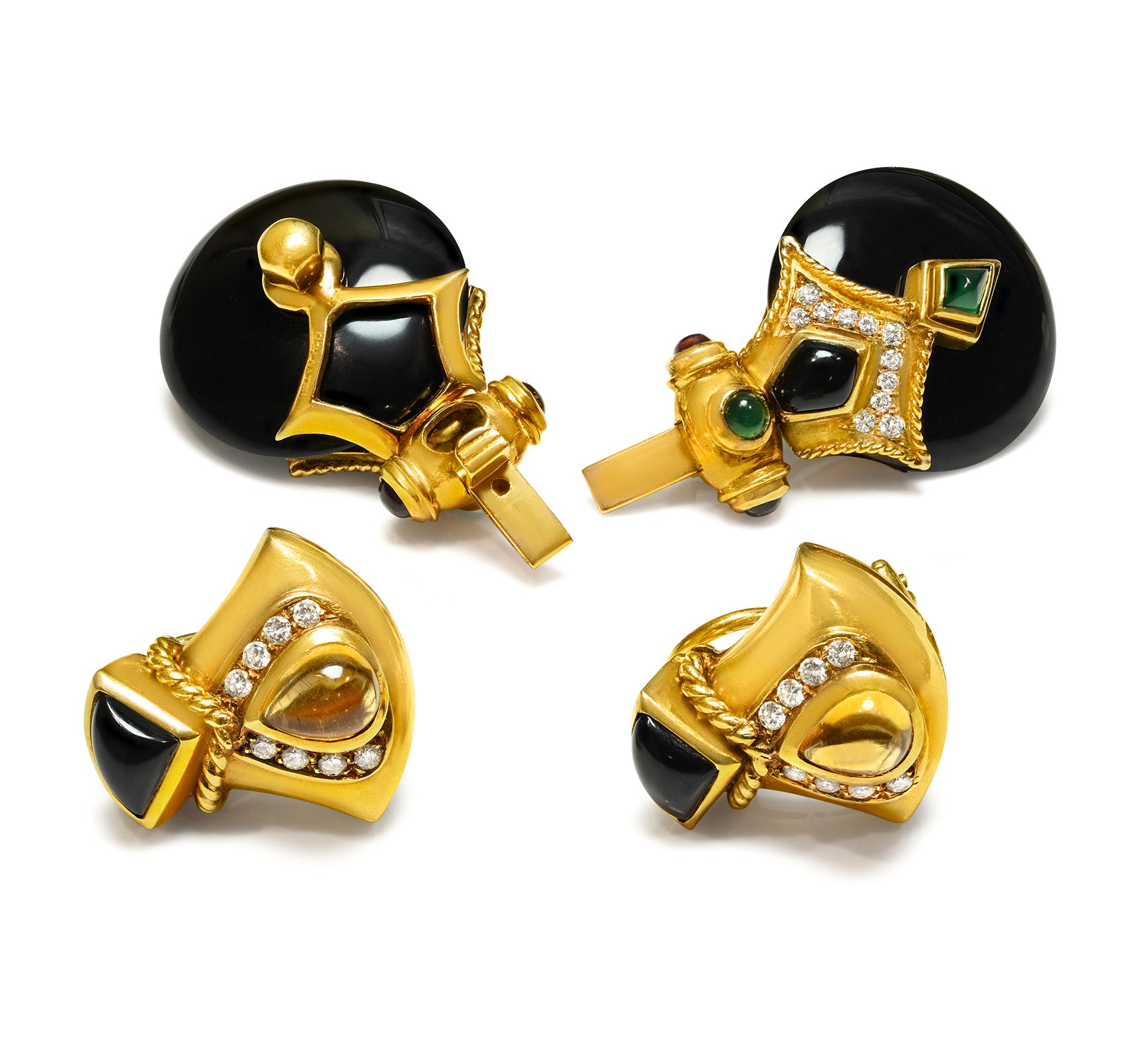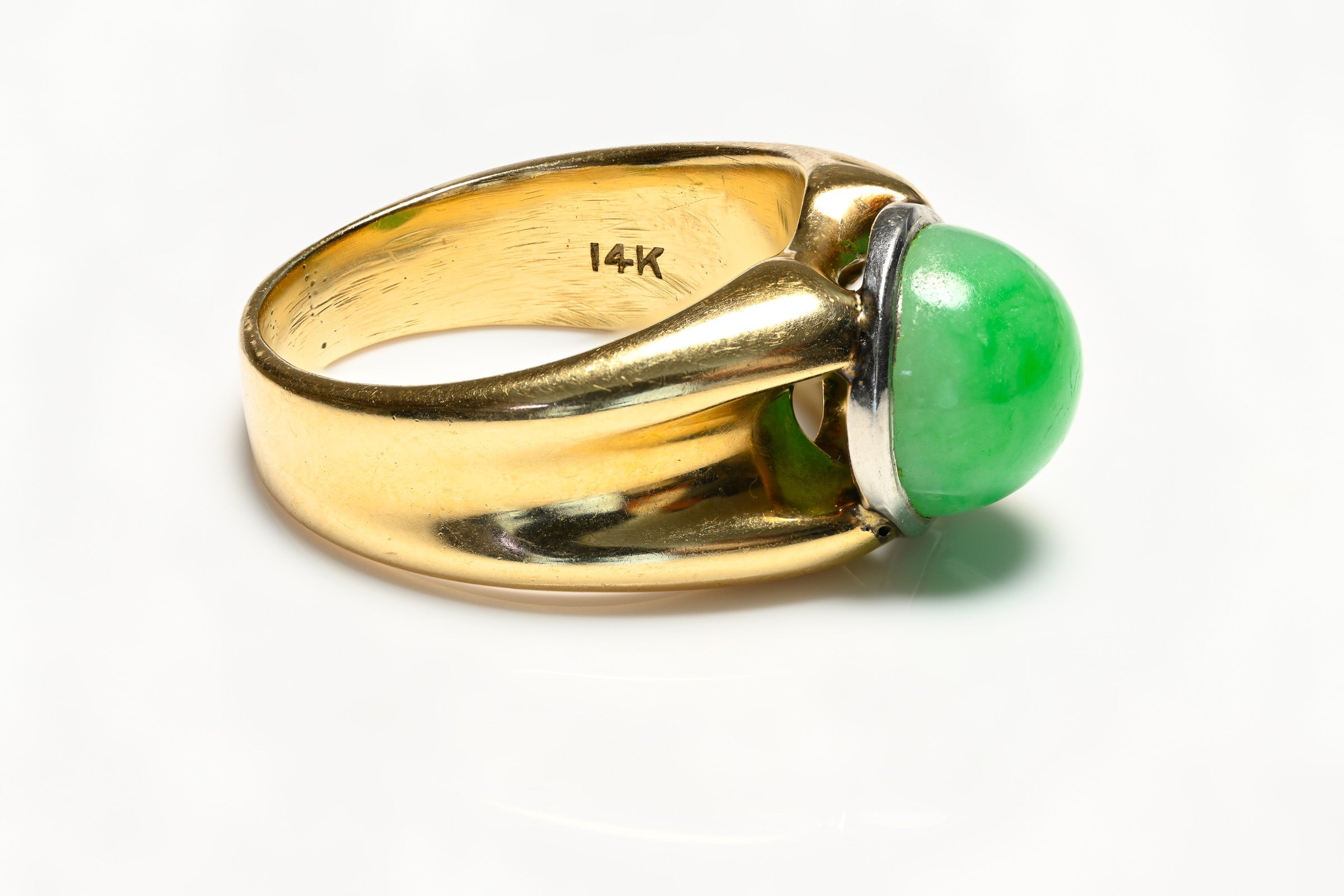
Stamped in Time: The Story Behind Jewelry Hallmarks
The hallmark—a tiny impression stamped into precious metals—has served as a trusted guarantee of quality and authenticity for centuries. Its origins can be traced back to the Middle Ages, when powerful craft guilds such as goldsmiths, silversmiths, and blacksmiths established rigorous systems to protect both their reputation and their customers.
Every item produced within these guilds had to bear a distinctive seal, functioning as a kind of signature. This mark confirmed not only the origin of the piece but also the purity of the materials used. It was a strict, highly regulated practice that shielded buyers from fraud and reinforced the integrity of the craft.
In Italy, for instance, cities such as Genoa and Venice required all gold and silver objects to be carefully inspected by municipal officials before they could be sold. Only after passing this quality check was an official hallmark applied—transforming the piece into both a work of art and a certified guarantee.

How Hallmarks Work and What They Signify
A hallmark was applied using a small, precise metal punch, leaving behind a unique impression. These symbols could reveal critical details about the piece:
-
Place of production (the city or region)
-
Type of precious metal (gold, silver, or platinum)
-
Purity of the alloy (expressed in karats or parts per thousand ‰)
-
Maker’s mark (the identity of the workshop or master craftsman)
By the Middle Ages, this system of stamping metals was already well-established in many European centers of trade. Each item had to undergo a meticulous evaluation before being approved, ensuring that the final product met the high standards set by the guilds.
Evolution Over Time
As centuries passed, the hallmarking system evolved into an increasingly refined language of symbols. Each country developed its own set of codes—sometimes simple, sometimes remarkably complex—but always with the same purpose: to certify purity, origin, and craftsmanship.
In Italy, the system of hallmarking, known as punzonatura, never disappeared. On the contrary, it became more sophisticated, with regulations that continue to protect artisanal jewelry to this day. Even now, a hallmark stamped on a piece of gold or silver provides assurance of its quality and provenance.
A vivid reminder of this history can be found at the Ethnographic Museum of La Spezia, where visitors can examine centuries-old jewelry and silverware bearing these ancient hallmarks. These small symbols, though subtle, represent the survival of a tradition where excellence, honesty, and artistry were inseparable.
Hallmarks as Timeless Testimony
A hallmark is not just a mark of quality—it is a historical testimony engraved into metal. Each impression tells a story of craftsmanship, discipline, and trust passed down across generations. Through them, we glimpse a continuous narrative of precision and authenticity that has endured for hundreds of years and remains relevant today.

The European System: Territorial, Standard, and Maker’s Hallmarks
Over time, Europe developed a multi-layered hallmarking system, with specific marks serving different purposes:
-
Standard marks: Guaranteeing the fineness of the metal (e.g., sterling silver at 925‰).
-
Territorial or city marks: Indicating where the piece was produced.
-
Maker’s marks: Identifying the individual goldsmith or workshop.
England, in particular, created one of the oldest and most comprehensive hallmarking traditions, dating back to the 1200s. Its hallmarking laws established a set of mandatory symbols that became globally recognized:
-
The lion passant for sterling silver (925).
-
The maker’s mark (initials or a symbol identifying the craftsman).
-
The town mark (such as London’s leopard’s head).
-
The date letter, which allowed pieces to be precisely dated.
-
The duty mark, featuring the monarch’s effigy, used during specific historical periods to indicate tax had been paid.
This combination of symbols created a robust system that made English silver and goldwork among the most trusted in the world.
The Silver Hallmark in England
Origins and Purpose
The system of hallmarking in England, officially introduced in 1300, had a clear and enduring purpose: to guarantee the purity of silver and gold objects. It was a safeguard against counterfeit items and, historically, a way to prevent the debasement of currency.
Because the same precious metals were used both for minting coins and for producing silverware or jewelry, the Crown mandated a unified system to test and regulate every item made of gold or silver. This ensured that the standards of fineness applied consistently across currency and decorative objects alike.
Testing and Marking Practices
Hallmarking applied not only to the main body of an object but also to all its removable components—such as handles, lids, or fittings attached by screws or bolts. Each of these parts had to be tested and stamped with at least the fineness mark and usually also the maker’s mark. For paired objects, like a platter with its lid, both components required a complete set of hallmarks.
In traditional English silverware, a minimum of four marks was mandatory:
-
The lion passant (sterling silver, 925/1000) or the britannia mark (958/1000)
-
The maker’s mark
-
The town mark
-
The date letter
Depending on the period, there could be five or more hallmarks. For example, between 1784 and 1889, the duty mark was required—a punch bearing the monarch’s effigy to confirm that a tax had been paid. This mark has even been reintroduced in recent years for items produced under royal patronage.
Foreign items added another layer of complexity: even if a piece already carried a complete hallmark abroad, it was required to be re-tested and re-marked before being sold in Britain.
The Role of Goldsmiths’ Hall
The very word hallmark originates from the Goldsmiths’ Hall in London, which was granted authority by royal decree in the early 14th century to administer and supervise the hallmarking system. To this day, Goldsmiths’ Hall remains a central institution in regulating and testing precious metal items in England.
Until the mid-19th century, fineness was verified not only through hallmarking but also using a unique testing method involving a gelatinous substance derived from animal intestines, applied by Goldsmiths’ Hall. Though this practice was eventually phased out, it underscores the meticulous attention paid to authenticity.
As the demand for hallmarking grew, new assay offices were established in other cities such as Birmingham and Sheffield, each adopting the same standards under Crown authority. In 1921, the powers and responsibilities of these offices were formally recognized and protected by legislation.
Hallmarking in Modern England
Today, English law remains among the strictest in the world regarding precious metal certification. All items must be submitted to a recognized assay office and carry at least:
-
The maker’s mark
-
The fineness mark
The town mark and date letter are no longer mandatory but remain strongly recommended for customs, historical, and legal purposes. Importantly, under English law, an unmarked item is presumed to be of inferior quality—making hallmarks not only a legal safeguard but also a vital factor in determining a piece’s value.
A Tradition of Scholarship and Enforcement
England has a long and celebrated tradition of collecting and studying hallmarks. Over the centuries, countless reference works have been published, allowing historians, jewelers, and collectors to decode these tiny but powerful symbols.
Fraudulent hallmarking, however, was never taken lightly. Severe penalties and prison sentences awaited those who attempted to falsify marks or deceive the public, a reflection of just how central hallmarking was—and still is—to England’s reputation for trustworthy craftsmanship and honest trade.

The French Hallmarking System
Medieval Origins
Although the centralized hallmarking system of France was formally established in 1797, its roots stretch deep into the Middle Ages. In 1260, Étienne Boileau, Provost of Paris under King Louis IX, regulated the goldsmiths’ guilds by requiring them to guarantee the fineness of precious metals.
By 1272, the first community poinçons of goldsmiths began to appear. Three years later, in 1275, King Philip III decreed that each guild must apply its own hallmark for silver objects. In 1313, Philip IV extended this rule to gold, further tightening standards.
Over the following decades, hallmarking became more precise. In 1355 (John II) and 1378 (Charles V), the poinçon de maître was introduced: a personal mark for each goldsmith, typically a crowned fleur-de-lis combined with initials or a symbol. By 1460, two separate hallmarks were required: the maker’s mark and the sworn inspector’s mark. Later, fiscal stamps were added to ensure compliance with taxation on metal fineness.
The Colbert Reforms and the Ancien Régime
A major shift occurred in 1674, when Jean-Baptiste Colbert, the powerful finance minister of Louis XIV, reformed the system. He placed hallmarking under the strict supervision of the Fermiers Généraux (tax officials). At this stage, each object could bear up to four marks:
-
The merchandise mark
-
The juror’s mark
-
The tax mark
-
The exemption mark
This multi-layered control system reflected both the prestige of French goldsmithing and the fiscal importance of precious metals to the monarchy.
Revolution and State Control
The French Revolution of 1789 abolished guild privileges and corporate controls, dismantling the traditional system. Only in 1797, with the law of 19 Brumaire (November 9), was a new state-controlled guarantee system reintroduced, covering both gold and silver.
Between 1797 and 1838, new finishing standards were defined, including 950/1000 and 800/1000 purity levels. Paris and the departments used distinct hallmarks, such as the Cérès and Hercule guarantee marks, which varied according to weight and region.
The Helmeted Minerva: 1838 and Beyond
On May 10, 1838, one of the most iconic French hallmarks was introduced: the helmeted Minerva head. This symbol became the official mark for silver, distinguishing between:
-
First standard: 950/1000 fineness
-
Second standard: 800/1000 fineness
At the same time, an export hallmark, the Mercury’s Head, was created for silver objects destined for international markets. This mark was used primarily between 1840 and 1879, with slight variations depending on the fineness level.
After 1973, a new hallmark for 925/1000 silver was added, accompanied by a system of letters indicating the period of application (A, B, C, and so forth).
Modern French Hallmarks
Even today, the state hallmark is mandatory on all precious metal items. In addition, the maker’s mark—usually a lozenge-shaped (diamond) punch containing the goldsmith’s initials and a symbol—is legally required.
In 1994, a reform allowed authorized private companies to apply hallmarks, provided they operate under strict state guidelines. This brought greater flexibility while preserving the integrity of French jewelry and silverware.
Summary of Main French Hallmarks
1260–1500
-
Community fleur-de-lis
-
Poinçon de maître with initials
1500–1797
-
Multiple marks: maker’s mark, sworn official’s mark, and tax marks (Colbert system)
1797–1838
-
Post-Revolution reforms
-
Standards of 950/1000 and 800/1000
-
Cérès and Hercule guarantee marks
1838–1973
-
Helmeted Minerva mark (950 and 800 standards)
-
Mercury’s Head export mark (mainly 1840–1879)
After 1973
-
925/1000 silver standard
-
Letter-coded period marks (A, B, C, etc.)
-
Mandatory maker’s mark and state guarantee mark
Cultural and Legal Significance of Hallmarks
France: A Model for Europe
France was the first European country to introduce a mandatory guarantee system for precious metals, beginning as early as the 13th–14th centuries. Its early hallmarking regulations, rooted in both craft guild control and state oversight, inspired similar systems in many Western nations.
Even today, the dual requirement of a state hallmark and a maker’s mark ensures transparency, authenticity, and traceability in French gold and silver items. This combination has made French hallmarking not only a technical safeguard but also a cultural institution—one that symbolizes trust in the nation’s renowned jewelry and silversmithing tradition.
Russia: From Zolotniks to the Soviet System
Peter the Great and the Zolotnik Standards
In Russia, a formal system of silver purity control was introduced in 1700, when Peter the Great issued a ukaz establishing four standards of fineness, measured in zolotniks:
-
96 zolotniks = pure silver (1000/1000)
-
90 zolotniks = 93.7% silver
-
84 zolotniks = 87.5% silver (the most common and enduring standard)
-
62 zolotniks = 64.5% silver
Although hallmarking was not mandatory before 1613, after 1700 it became obligatory—at least in Moscow. By the 1740s, a typical Russian silver item bore four stamps:
-
The maker’s mark
-
The town or regional mark
-
The assayer’s mark
-
The fineness number in zolotniks
From 1798, the official minimum standard was set at 84 zolotnik (0.875), while higher levels such as 88 (0.9166) and 91 (0.9479) were reserved for superior-quality objects.
The Kokoshnik Era (1899–1917/1926)
At the end of the 19th century, hallmarking entered one of its most iconic phases. In 1896, Tsar Nicholas II initiated a reform that introduced the famous Kokoshnik mark—a woman’s head wearing a traditional Russian headdress.
-
1899–1908: Female head facing left, zolotnik number to the left, assayer’s initials to the right, all inside an oval cartouche.
-
1908–1917/1926: Female head facing right, purity number on the right, and a Greek letter on the left to indicate the assay office (e.g., alpha = St. Petersburg, delta = Moscow).
This mark not only certified purity but also reflected national identity. Remarkably, the Kokoshnik hallmark was reintroduced in 1985 as a revival of this traditional symbol.
Transition to the Soviet System
After the Russian Revolution, the imperial hallmarking system continued for a few years but was completely replaced in 1927 by a state-controlled Soviet system.
-
1923–1926: Items were often marked “MYuT” (Moscow Jewelry Trust).
-
From 1927: New hallmark introduced featuring the hammer and sickle, sometimes within a five-pointed star, accompanied by the assay office logo, sample number, and classification marks.
-
From 1953: Marks also included the year of production and an alphanumeric code identifying the factory. For example, “TZ0” indicated a piece produced in 1960 at the Tallinn factory.
This Soviet hallmarking system, focused on industrial control and traceability, remained in place virtually unchanged until the dissolution of the USSR in 1994.
Summary of Russian Silver Hallmarks
1700–1896
-
Hallmarks: Town mark, maker’s mark, assayer’s symbol
-
Silver fineness: 84–96 zolotnik
1899–1908
-
Hallmarks: Kokoshnik (female profile facing left)
-
Silver fineness: 84 zolotnik (0.875) most common
1908–1917/1926
-
Hallmarks: Kokoshnik facing right, plus Greek letter for city (e.g., alpha = St. Petersburg, delta = Moscow)
-
Silver fineness: 84, 88, 91 zolotnik
1923–1926
-
Hallmarks: “MYuT” (Moscow Jewelry Trust)
-
Silver fineness: Variable
1927–1953
-
Hallmarks: Hammer and sickle, Soviet regional metric marks
-
Silver fineness: 875/1000 and others
1953–1994
-
Hallmarks: Official state logo with year and factory code
-
Silver fineness: 875/1000 and similar standards
A Few Practical Notes
The hallmark “84” (84 zolotnik) is the most common and recognizable fineness in Russian silver, corresponding to 875/1000 silver. Collectors often regard it as a sign of authenticity and continuity because of its long use across centuries.
Typical collector notes include simple explanations such as:
-
“84 zolotnik means .875 fine silver.”
-
“M./Mo means Moscow... the hammer and sickle image shows it was made between 1958 and 1994.”
These shorthand interpretations demonstrate how hallmark knowledge has become second nature among silver enthusiasts.

United States – A Complete Overview of Hallmarking History
Origins and the Lack of a National System
Unlike Europe, the United States never developed a centralized hallmarking system for jewelry or silverware. In the 18th and early 19th centuries, silver fineness varied widely:
-
Before 1868, the most common material was “coin silver”, made by melting down coins. Purity ranged from .750 to .900, and items were often marked “COIN,” “PURE COIN,” or simply left unmarked.
-
Between 1814 and 1830, Baltimore briefly operated an assay office, one of the few exceptions to America’s otherwise decentralized system.
In 1868, the sterling silver standard (92.5%) was officially adopted. From that point, silver objects could be marked “STERLING,” “925,” or “925/1000.”
Maker’s Marks and Commercial Practices
In the absence of an official registry, each manufacturer used a maker’s mark as a form of commercial identification. By law, any item stamped “STERLING” or “925” had to meet that standard, but the guarantee came from the manufacturer itself—there were no external assay offices as in the U.K.
Because of this decentralized system, imitations of British hallmarks—such as the lion passant or assay office marks—were often used on silver-plated or lower-purity items. While misleading, this was not illegal in the U.S., unlike in Britain.
Coins and Bullion
Government control in the U.S. focused mainly on currency and bullion, not on jewelry or silverware. The Mint Act of 1792 established the U.S. Assay Commission, tasked with testing the fineness of gold and silver coins. This commission operated until 1980.
U.S. coins and ingots were marked with:
-
Fineness level
-
Mint of origin (e.g., Denver, Philadelphia, San Francisco)
-
In some cases, regional or official state assay marks
A famous example is the “Ruler Ingot” silver bar, produced at the Denver Mint, which bore the Utah state hallmark applied by the Denver Assay Office.
Summary of U.S. Hallmarking by Period
Before 1868
-
Predominantly “coin silver” (variable purity)
-
No mandatory hallmarks
-
Occasional city practices (e.g., Baltimore assay office, 1814–1830)
After 1868
-
Introduction of the sterling silver standard (92.5%)
-
Marks: “STERLING,” “925,” or “925/1000”
-
Maker’s marks became widespread identifiers
Late 19th – 20th century
-
Large manufacturers (e.g., Tiffany & Co., Gorham, Whiting) introduced internal date codes or literal systems
-
No centralized national hallmark system
1792–1980 (Coins and Bullion)
-
Annual testing by the U.S. Assay Commission
-
Marks for fineness, mint origin, and official approval on coins and ingots
Key Takeaway
Unlike the U.K. or France, the U.S. hallmarking system was never centralized. Jewelry and silverware relied on voluntary standards and maker’s marks for authenticity. The only consistent government oversight applied to coins and bullion, which were strictly tested until the dissolution of the Assay Commission in 1980.


Evolution of Hallmarking in Italy
Fragmented Beginnings Before Unification
Before the unification of Italy, hallmarking was far from standardized. Each pre-unitary state followed its own rules:
-
In Milan, quality was guaranteed only by workshop marks.
-
In other regions, local authorities imposed their own systems.
This fragmented approach made hallmarking in Italy one of the most complex landscapes in Europe. Unlike England or France, where centralized systems developed early, Italy’s hallmarking remained inconsistent until the late 19th century.
First National Reforms After Unification
After the creation of the Kingdom of Italy, the state began to unify hallmarking practices:
-
Law of May 2, 1872: introduced an optional uniform hallmark, featuring a woman’s head wearing a turreted crown, accompanied by a number indicating fineness (950, 900, 800).
-
Law of February 5, 1934: made hallmarks mandatory. Two key marks were required:
-
The fineness mark (e.g., “800” inside an oval).
-
The maker’s identification, consisting of a number + provincial abbreviation + the fascio littorio, inside a lozenge.
-
After the October 26, 1944 decree, the fascio littorio was abolished. Older punches remained valid until replaced, but no unofficial marks were permitted—only legally registered company marks traceable to known workshops (e.g., FROV for Vicenza).
Modernization of Italian Hallmarks
-
Law of January 30, 1968 (effective from 1970): replaced the lozenge with an elongated hexagon containing the Star of the Republic, the producer’s number, and the provincial abbreviation. The fineness mark (800, 835, 925) was applied separately in an oval.
-
Legislative decree of May 22, 1999: introduced a hallmark for objects made with precious metal layers over non-precious materials. This mark consisted of a capital “R” inside a square outline, followed by the minimum and maximum weight in grams of silver.
Hallmarks and the Craft of the Goldsmith
The hallmarking punch—the tool used to stamp precious metals—left an engraved symbol that acted as both a guarantee of quality and an official record of origin. Over time, the terms “punzone” and “mark” became synonymous in Italy, referring to the legal control act carried out by guilds or state authorities.
Hallmarks could provide information such as:
-
Fineness of the metal (e.g., silver 925, gold 750).
-
City or region of origin.
-
Workshop or maker.
-
Year or period of assay.
-
Additional marks for imported or antique items.
Early Historical Mentions
Although Italy developed a unified hallmarking system relatively late, the practice of hallmarking jewelry has deeper European roots:
-
The earliest control marks were found on Byzantine jewelry from the 4th–7th centuries, sometimes applied by imperial officials.
-
In 1275, Philip the Bold of France ordered each city to mark its jewelry—a measure that influenced neighboring regions.
-
By the 14th century, hallmarking had become widespread in England, France, and parts of continental Europe, though inconsistently applied in Italy.
It is generally accepted that Milan was unique in guaranteeing quality exclusively through the workshop mark, without state oversight.
French and English Influence
In the 17th–18th centuries, France and England were pioneers in establishing strict hallmarking systems:
-
In England, the Goldsmiths’ Company (founded in 1180) introduced the leopard’s head punch around 1300, followed by the maker’s mark (1363) and the date-letter system (1478).
-
In France, the system was often more complex, with multiple symbols or even combined marks indicating city, guarantee, and date.
Under Napoleonic influence in the early 19th century, many Italian territories reorganized hallmarking practices under French-style administration, actively protecting fineness standards.
The Role of Hallmarks for Collectors and Historians
For modern collectors and art historians, hallmarks serve as miniature documents. By decoding the numbers, regional abbreviations, and symbols, one can reconstruct an object’s provenance, production period, and maker.
They provide:
-
Transparency in trade.
-
Authenticity of materials.
-
Legal protection against fraud.
-
A reliable tool for dating antique jewelry—something nearly impossible to do through stylistic analysis alone, given the uniformity of design and the fluid exchange of artists between European courts.
Silver Hallmarking: The History of Silver Marking
Origins of Silver Hallmarking
Silver hallmarking is an ancient practice that emerged in Medieval Europe as a way to guarantee the authenticity and quality of precious metal objects. These marks served not only as a consumer safeguard but also as a distinctive signature for goldsmiths, linking their names to their craftsmanship.
As time passed, hallmarking systems evolved in different countries, reflecting both legal requirements and artistic traditions. Each nation created its own rules, symbols, and standards of purity—making hallmarking one of the richest sources of information for jewelry historians and collectors.
The Italian Tradition of Hallmarking
In Italy, hallmarking dates back at least to the communal era (12th–13th centuries), when guilds of artisans imposed strict rules on the production and sale of precious metals. These regulations ensured that silver objects met specific fineness standards and could be trusted by buyers.
The Italian hallmark, or marchio argento, consists of engraved symbols struck into the metal with a punch. These marks typically indicate:
-
The origin of the piece.
-
The purity of the silver.
-
The artisan or workshop that produced it.
-
Sometimes, the year of production.
Until the unification of Italy in 1861, each pre-unitary state had its own hallmarking system. After unification, a national hallmark was introduced: an oval punch showing the fineness number (commonly “800,” meaning 800 parts per thousand silver), together with the province initials and a symbol identifying the manufacturing city.
The 20th-Century Reforms
During the 20th century, Italy standardized hallmarking laws further. By mid-century, official Italian hallmarks became:
-
Rectangular with rounded corners,
-
Containing the producer’s identification number,
-
Plus the province abbreviation within its territorial jurisdiction.
This created a uniform national system, still recognizable today, which balances legal control with artisanal identity.
Hallmarks as Historical Documents
A silver hallmark is more than a technical stamp—it is a historical record. Each mark acts like a miniature document, telling a story of:
-
Where the object was made.
-
When it was produced.
-
Who crafted it.
-
The purity of the silver used.
For collectors and art historians, this makes hallmarks as important as a signature on a painting: they certify authenticity and place the object within a specific historical, social, and cultural context.
Handcrafted vs. Modern Hallmarks
While many modern processes are mechanized or digitized to ensure precision and uniformity, some artisans still prefer to apply hallmarks by hand. This method preserves a sense of tradition, individuality, and artistry, adding emotional and cultural value to each piece.
At the same time, understanding hallmarks has become an essential tool in combating counterfeiting. Forgeries exist, but expert appraisers can usually distinguish genuine hallmarks from imitations—protecting both collectors and the jewelry market.
The Role of Experts and Museums
Professionals in jewelry and silverwork play a key role in educating the public about hallmarks. Museums and cultural institutions also contribute through exhibitions, lectures, and publications that highlight the evolution of hallmarking practices. For newcomers to silver collecting, learning to read hallmarks is the first step toward identifying authentic vintage pieces and correctly assessing their value.
Legal Standards for Silver in Italy
Silver hallmarking follows the same principles as gold, with specific legal fineness standards:
-
925/1000 (sterling silver),
-
800/1000 (a lower but still accepted fineness).
Official hallmarks must include:
-
The producer’s or importer’s identification number.
-
The fineness mark (e.g., 925 or 800).
If an object is marked “ARG 800” or “ARG 1000”, it generally indicates silver-plated metal rather than solid silver—a crucial distinction for collectors and buyers.

The History of Gold Hallmarking in Europe and Beyond — From Antiquity to Modern Systems
Antiquity: The First Consumer Protection Marks
The story of gold hallmarking begins in Antiquity, long before the modern concept of consumer protection existed. In the Byzantine Empire (4th century AD), imperial authorities introduced early systems of marking coins, silver ingots, and precious metals. These marks guaranteed weight and purity, ensuring trust in currency and trade. It was, in many ways, the earliest known form of hallmarking—a precedent that influenced later European systems.
The Middle Ages: The Birth of the European System
By the 13th century, European kingdoms began introducing formal hallmarking systems to regulate gold and silver. These laws aimed to protect both the crown’s interests and the buyer’s trust, while also curbing fraud.
France
-
1260: Étienne Boileau’s Statut des Orfèvres laid down the first hallmarking regulations in Paris.
-
1313: King Philip IV extended these rules to gold, requiring both local control marks and the poinçon de maître (maker’s mark).
-
1427: The annual date letter system was introduced, adding a precise chronological element.
France’s system quickly became one of the most sophisticated in Europe, influencing many neighboring states.
England (United Kingdom)
-
1300: King Edward I issued the earliest hallmarking decree—gold had to be at least 19.2 carats, and silver bore the leopard’s head mark.
-
1363: The maker’s mark became mandatory, linking each piece to its goldsmith.
-
1478: Annual date letters were added, and the minimum purity for gold was set at 18 carats.
-
1576: Purity was raised to 22 carats, establishing the enduring “crown gold” standard.
-
1784: A new duty mark (the sovereign’s head) indicated payment of tax, used until 1890.
-
1854: Introduction of additional gold standards: 9 ct, 12 ct, and 15 ct.
-
1932: 12 ct and 15 ct were abolished; 14 ct became the new standard.
-
1942: During WWII, a special utility mark was introduced for 9 ct gold.
-
1973: The Hallmarking Act unified and modernized the law, extending it to platinum (and later palladium).
England’s system, based on guild control and assay offices, became a model admired throughout the world.
Other European Examples
-
Ireland: The Dublin Assay Office, founded in 1637, marked 22 ct gold with a crowned harp and date letters. Since 1730, the Hibernia tax mark was also added.
-
Switzerland: Precious metal testing dates back to the late Middle Ages, though today only watch cases must bear official marks; other gold and silver items are optional.
Purity Standards and Symbolic Marks
Throughout the Middle Ages and Renaissance, European gold typically ranged between 20 ct (83.3%) and 22 ct (91.7%). With the adoption of the carat standard, purity marks became more precise.
By the late 18th century, numerical fineness marks were introduced:
-
1798: The UK began marking gold with fineness numbers.
-
1844: Further reforms reinforced the system, with “18,” “22,” and later “9” or “14” used as clear indicators.
These marks, alongside symbols like the leopard’s head, crowned harp, or sovereign’s profile, served as both a legal guarantee and a visual emblem of trust.
Modern Developments and International Systems
The UK Hallmarking Act of 1973 set the framework for the modern hallmarking system, requiring:
-
A fineness mark (e.g., 750 for 18 ct gold).
-
The assay office symbol.
-
A date letter (optional today).
-
The sponsor’s or maker’s mark.
The Act also extended hallmarking to platinum and later palladium, ensuring consistency across precious metals.
Today, the UK is a member of the International Convention on the Control of Precious Metals, which allows mutual recognition of hallmarks across member states—a vital step for global trade.
Contemporary Hallmarking in Europe
-
France: All jewelry must bear official hallmarks, with limited exceptions (e.g., very small pieces or pre-1838 items). Vintage hallmarks sometimes fade over time due to wear.
-
Italy: Modern hallmarks (regulated since 1999) use an oval outline with fineness (e.g., 925, 800), plus the maker’s ID and province code inside a hexagon with a star. Special “R-925” marks denote silver-plated objects.
These modern systems remain legally binding and are crucial in the fight against counterfeiting.
The Cultural Significance of Hallmarks
Beyond their legal and financial roles, hallmarks carry deep symbolic value. They serve as:
-
Authentication tools, proving an object’s purity.
-
Historical markers, pinpointing when and where a piece was made.
-
Artistic symbols, connecting jewelry to cultural identity.
To collectors and historians, a hallmark is like a signature on a painting—it provides authenticity and context while also enriching the cultural story of the object.
Why It’s Useful to Know Gold Hallmarks
For collectors, jewelers, and enthusiasts, understanding hallmarking offers several advantages:
-
Evaluate authenticity and purity.
-
Determine the origin and date of an object.
-
Detect fake or forged marks.
-
Appreciate the artistic and cultural heritage embodied in gold jewelry.
A Timeless System for Modern Times
From the Byzantine emperors to modern assay offices, hallmarking has transformed from a basic consumer safeguard into a global legal standard. Its symbols—whether the leopard’s head of London, the Minerva of France, or the star of Italy—continue to protect buyers, authenticate craftsmanship, and preserve the cultural legacy of precious metals.
Gold hallmarking is more than a technical stamp: it is a bridge between history, law, and artistry, ensuring that every piece of jewelry tells a story not only through its design, but also through the marks engraved upon it.

What Are the Distinctive Hallmarks for Gold, Silver, or Platinum?
When reading a jewelry description, you may come across terms like the “eagle’s head mark” or the “owl mark.” These are hallmarks—small stamped or engraved symbols that provide essential information about a piece’s authenticity, purity, and origin. For collectors, dealers, and enthusiasts, hallmarks are like hidden signatures, transforming a jewel into a document of history and craftsmanship.
What Exactly Are Hallmarks?
Hallmarks are applied using a punch tool that stamps the mark onto the surface of the jewelry. They are usually placed in discreet but accessible locations, such as:
-
The inside of a ring band
-
The clasp of a bracelet or necklace
-
The back of a brooch or pendant
Each hallmark serves a specific purpose:
-
Maker’s mark: identifies the master goldsmith or workshop. In France, it is usually diamond-shaped with the maker’s initials. If the mark is oval, it signals a foreign import.
-
Fineness mark (guarantee mark): indicates the purity of the metal, expressed in parts per thousand (e.g., 750 = 75% gold).
Together, these marks certify the precious metal content and trace the object back to its origin. Luxury brands may also add a serial number, further strengthening identification.
French Regulations on Hallmarking
In France, hallmarking is strictly regulated, and all jewelry must bear official marks applied by authorized assay offices. However, there are exceptions:
-
Jewelry made before 1838
-
Gold items under 3 grams
-
Pieces where marking would risk damaging the structure
Vintage jewelry may also show faded hallmarks, worn away by decades of daily wear—yet even partial marks can still help experts identify and authenticate a piece.
How to Identify Distinctive Marks
Hallmarks for Gold
France uses a wide variety of symbols to denote gold purity. The most common include:
-
18k (750/1000) → Eagle’s head
-
22k (916/1000) → Eagle’s profile with the number 1 under the beak
-
24k (999/1000) → Seahorse profile (applied only in Paris)
-
14k (585/1000) → Shell
-
9k (375/1000) → Clover
Hallmarks for Silver
Silver is generally marked with the goddess Minerva or other symbolic animals:
-
925 (92.5% purity) → Minerva’s head with the number 1 and a letter
-
800 (80% purity) → Minerva’s head with the number 2
-
Uncertain or foreign origin → Swan profile
Hallmarks for Platinum
Platinum carries distinctive French marks that vary with purity:
-
99.9% → Penguin head
-
85–95% → Dog head
-
Below 85% → Mascaron head
Hallmarks for Second-Hand or Imported Jewelry
Special marks are reserved for jewelry of foreign origin or items resold in France:
-
Gold (at least 750/1000) → Owl
-
Silver (at least 800/1000) → Swan
These marks assure that even imported or vintage pieces meet the country’s strict quality standards.
Why Hallmarks Matter
For the trained eye, hallmarks unlock stories hidden within each jewel. They provide:
-
Authenticity → proof of genuine gold, silver, or platinum
-
Dating → indication of when and where a piece was made
-
Cultural heritage → connection to historic assay systems
-
Protection → safeguards against counterfeiting and fraud
Whether you are a collector, a historian, or simply someone who loves fine jewelry, learning to recognize hallmarks gives you the power to read the hidden language of precious metals.





